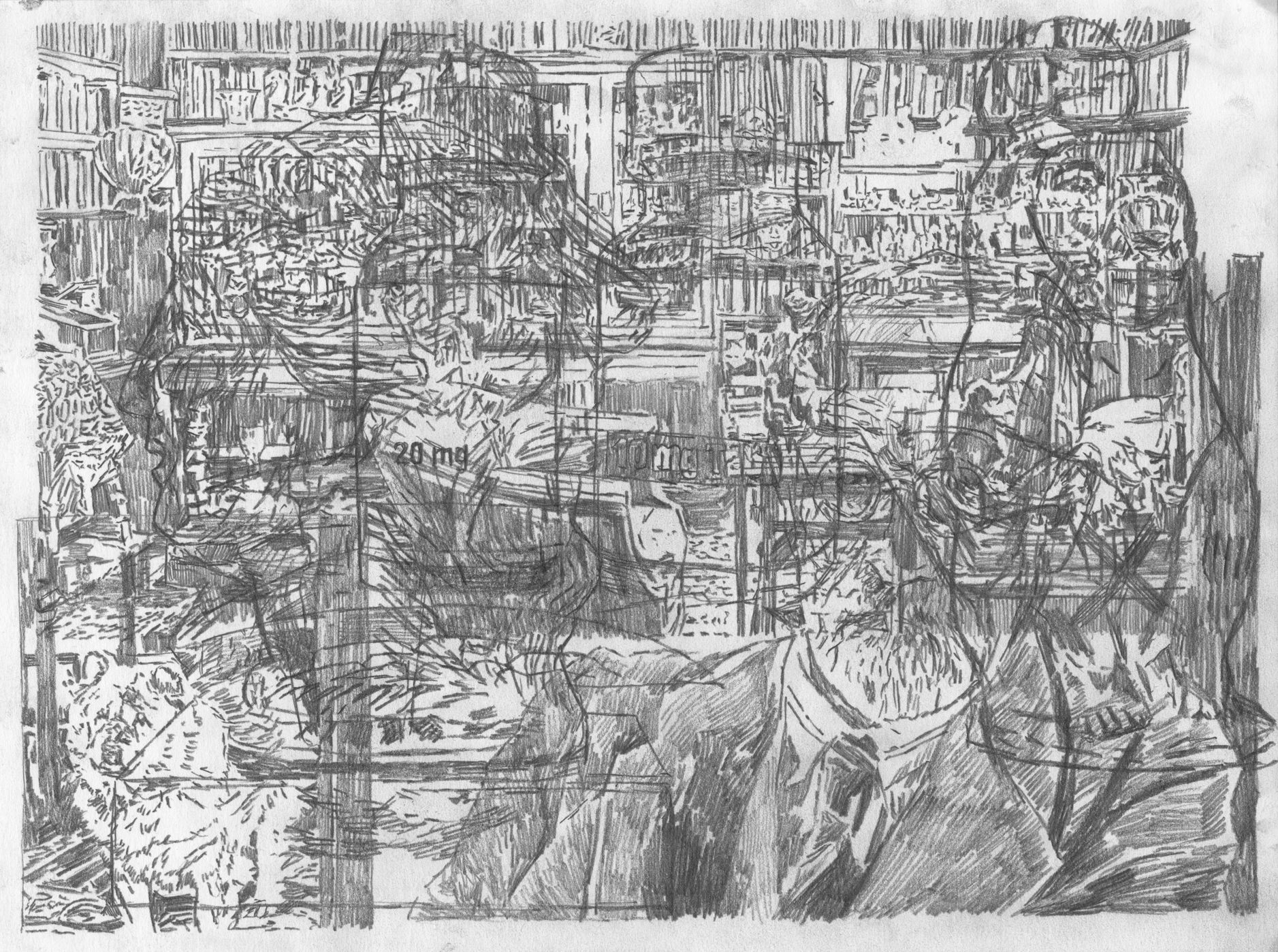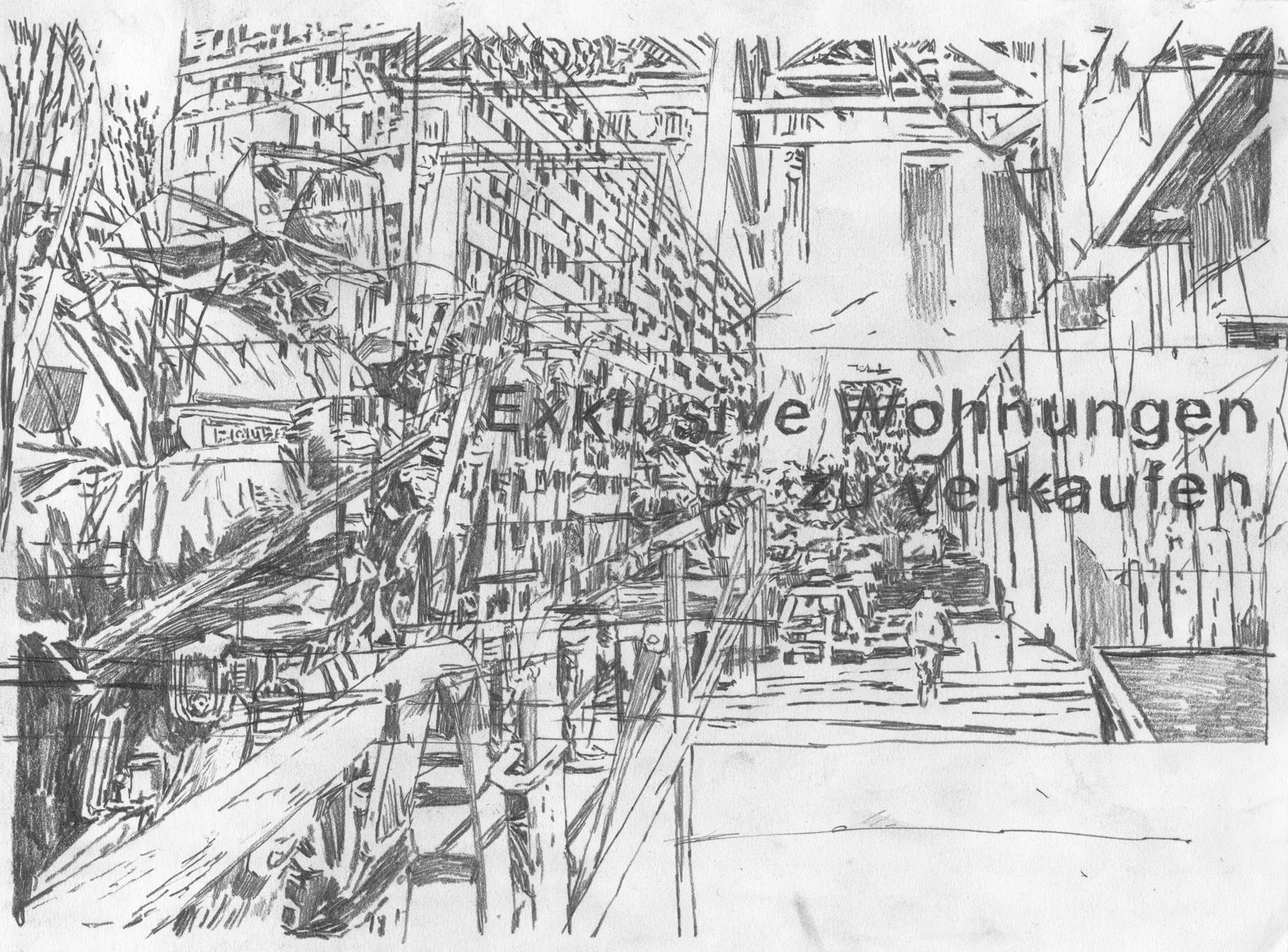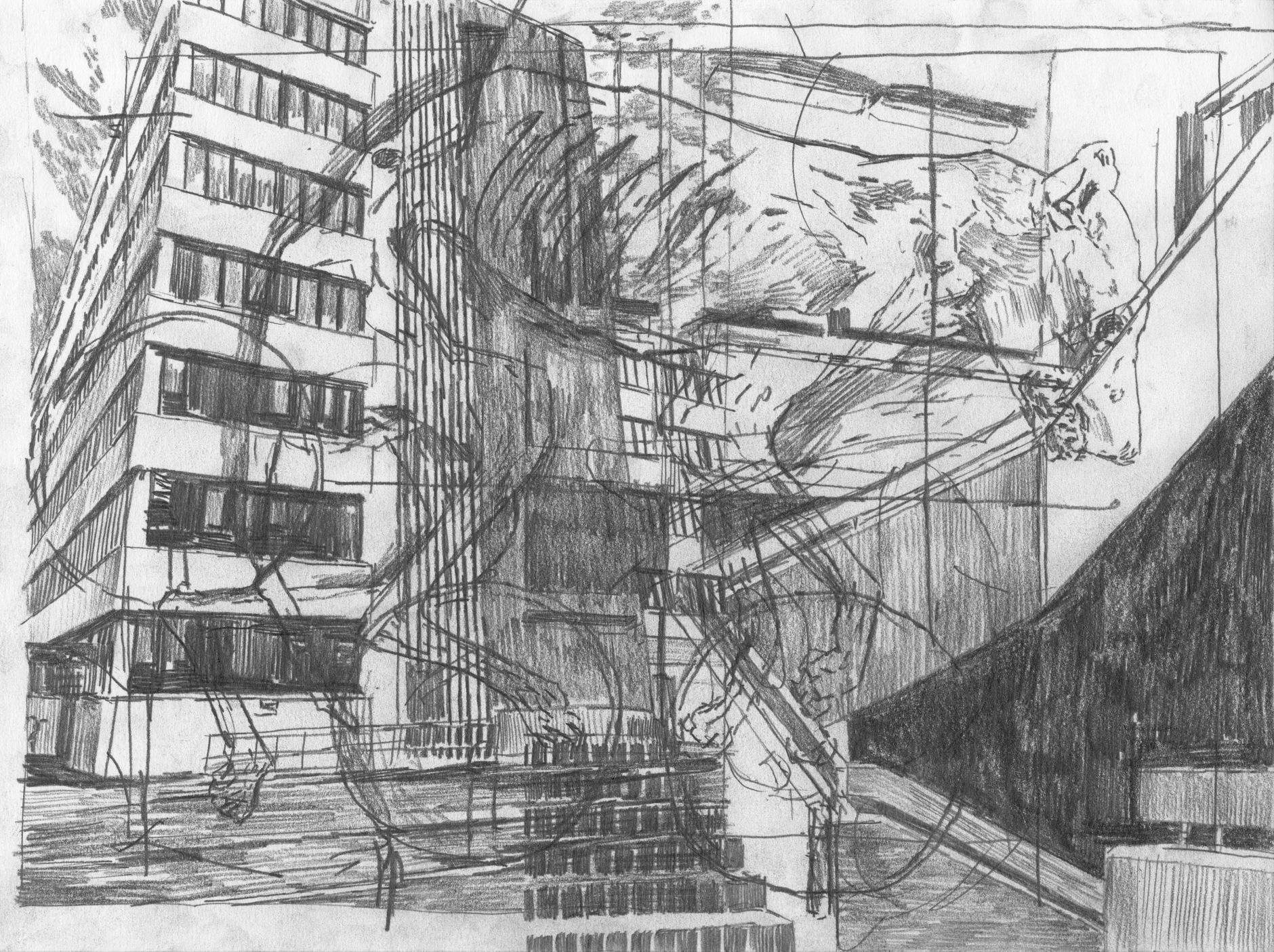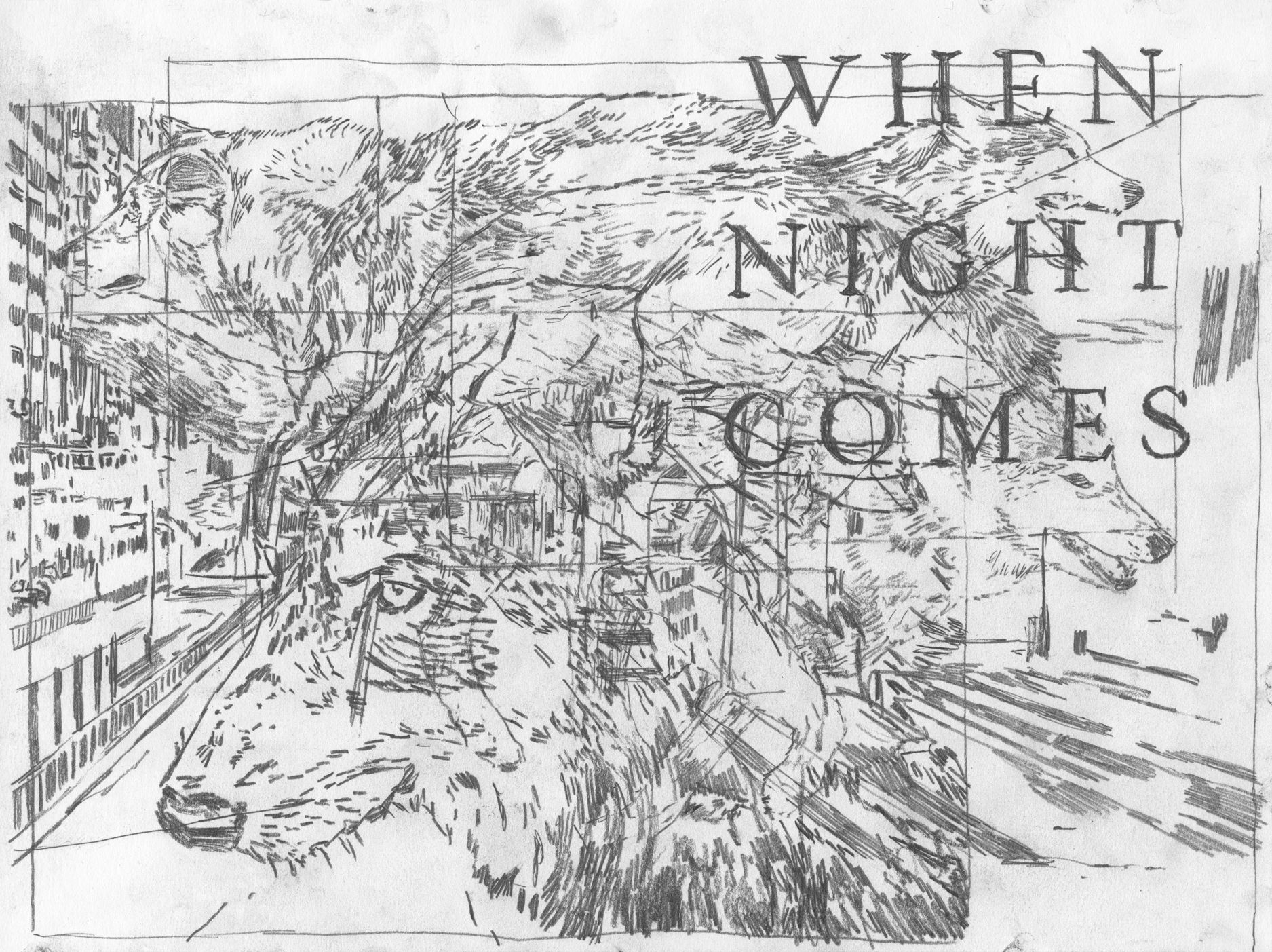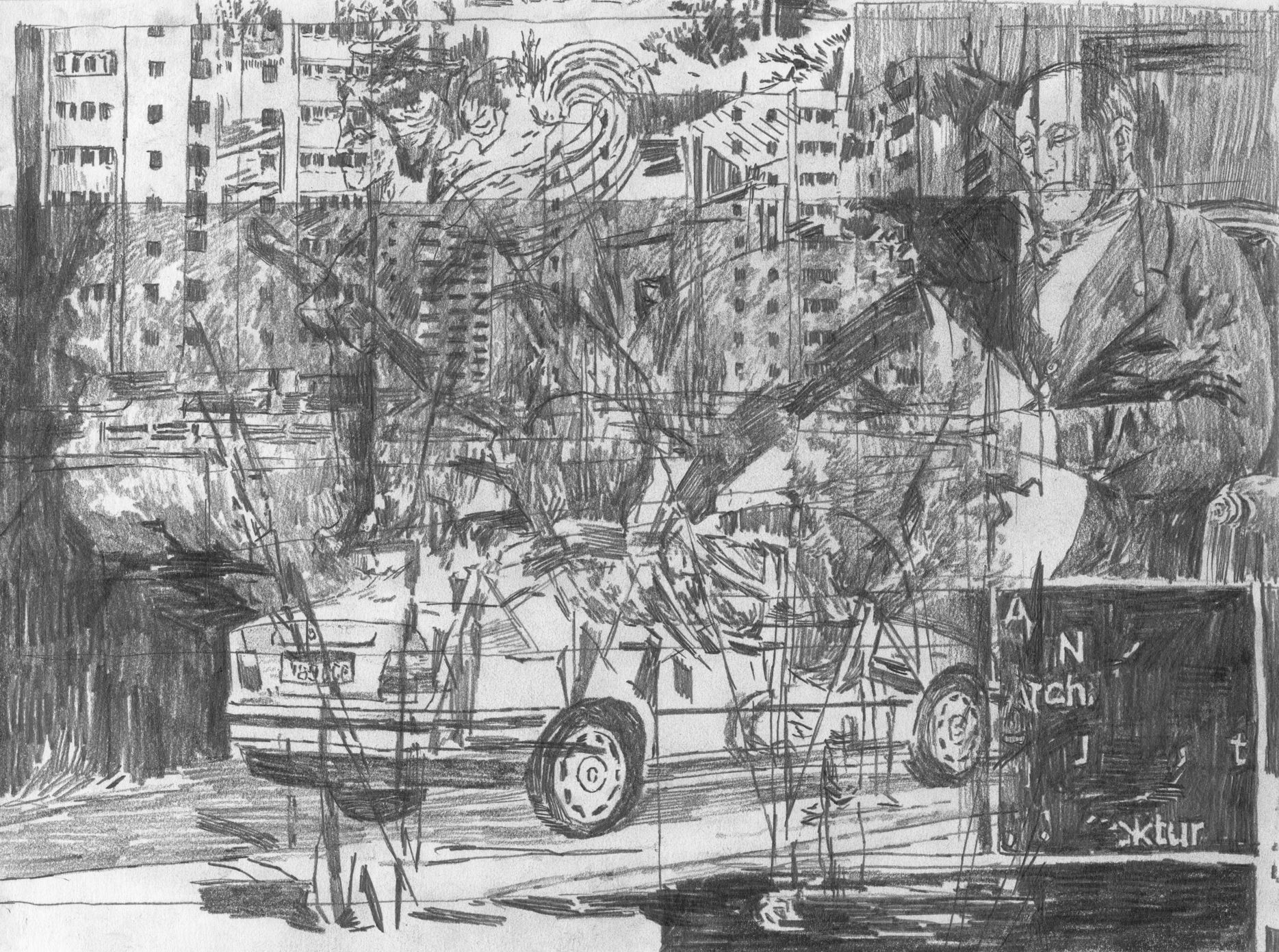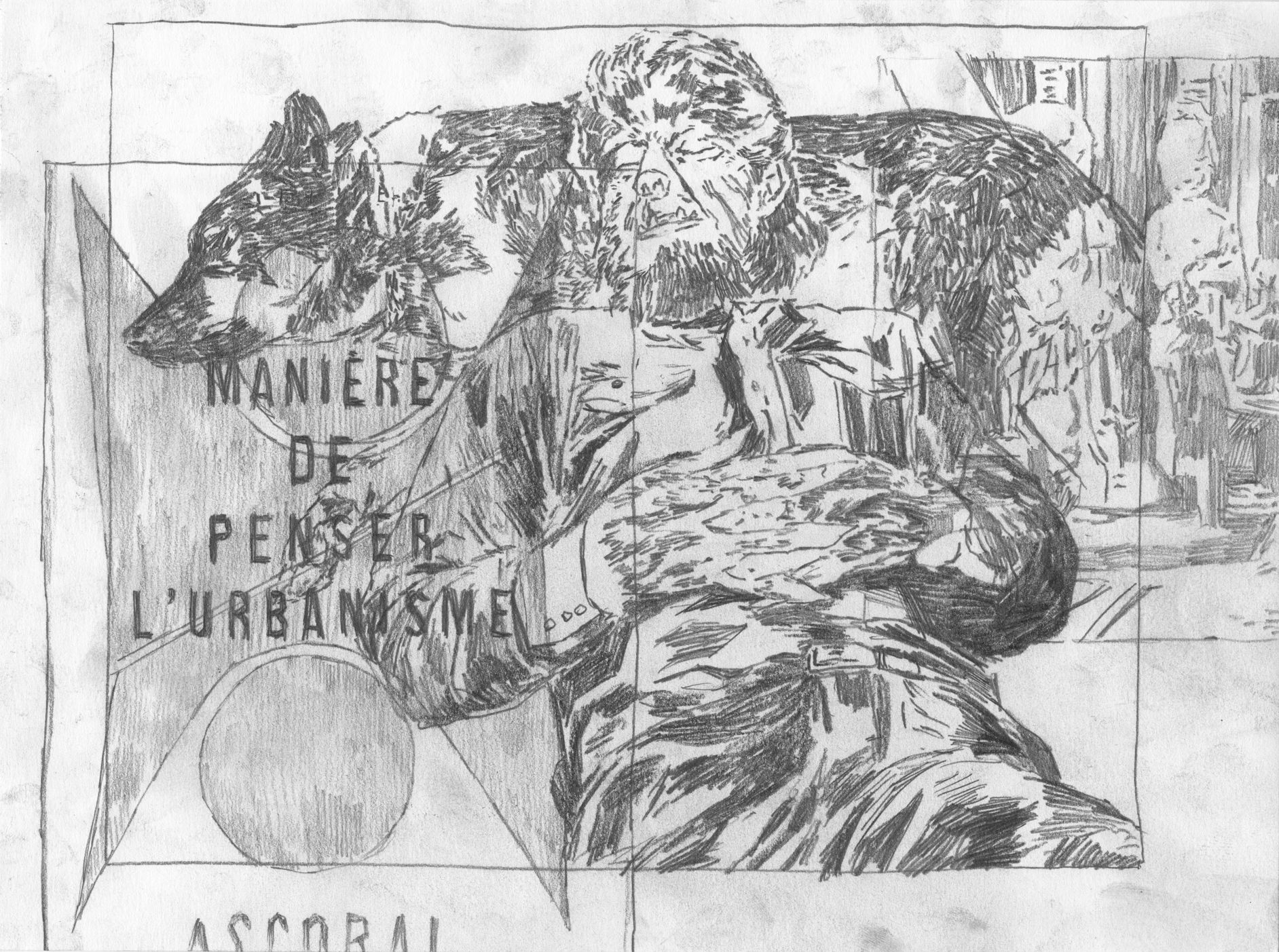The dead floating dog was whispering to him through the window, it's voice uncannily like that of the doctor. “the city has secured itself as a space of normality” it said. “A fortification necessary for its function of absorbing the over-production and surplus-value of an economy, ruled by the exclusive logic of unlimited growth”. “Go away” he said, without getting up to open the drapes. “The patterns that consist the coexistence of the city are pushed away, marginalized, controlled, suffocated and destroyed” the dog continued. “Urban life dies and the city comes to exist in permanent crisis, in a state of exception ruled by regimes of security, whose goal it is to assure that nothing happens”. The sound of the sirens was picking up outside, as the police cars circled his building in a vortex of noise and blue flashing lights. “The city is for sale” the dog said, unaffected. He tried to remember the city, its streets and squares, something made not from buildings or the minds of planners, but from collective use, from festivals, from language. The gatherings, the habits and rituals had disappeared, into the monied machines of property speculation, and were now being sold as folklore. While the city had been divided into practical zones of production of wealth, consumption, habitation and decision. “A place of consumption, and the consumption of place” the dog whispered. The Wolf-Man was surprised that he could hear this, as the sirens were now so loud that they seemed to be coming from inside the apartment. His sparse furniture was being flooded with the blue light, seemingly coming from everywhere at once, out the pores of the very building. Fever, gas, putrid sound and panic, a cacophony of space tightening around his body, the apartment block an extension of some police-thing, some hostile gaze, a device for torture and then, a loud noise; like a stun grenade, shook the window, somewhere outside the cub-multiplicity was howling.


